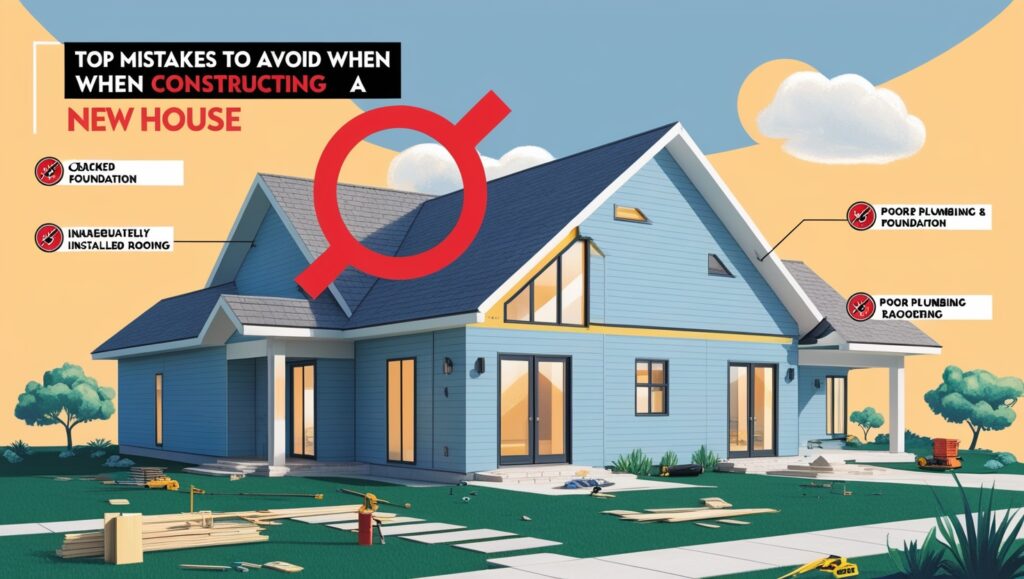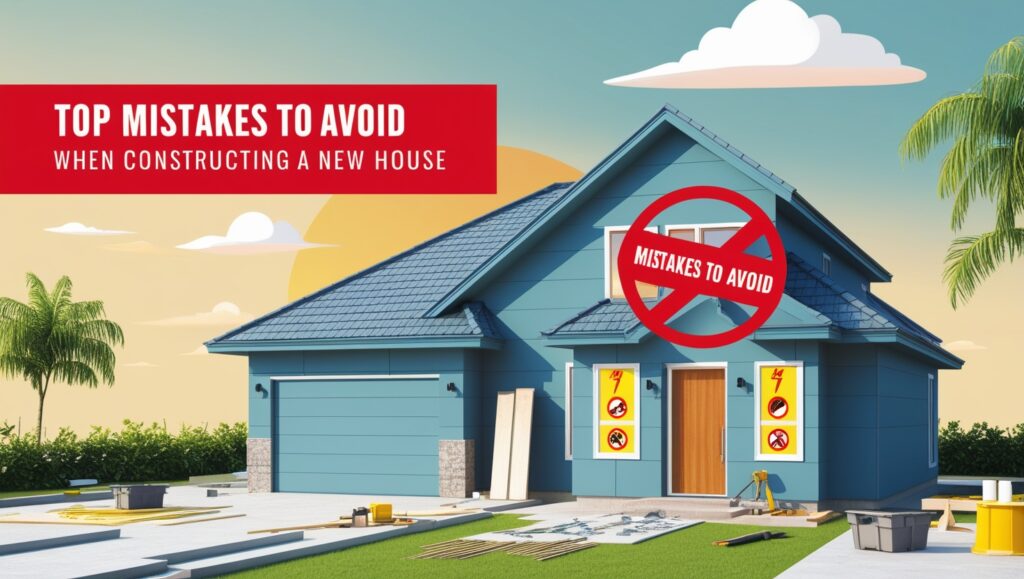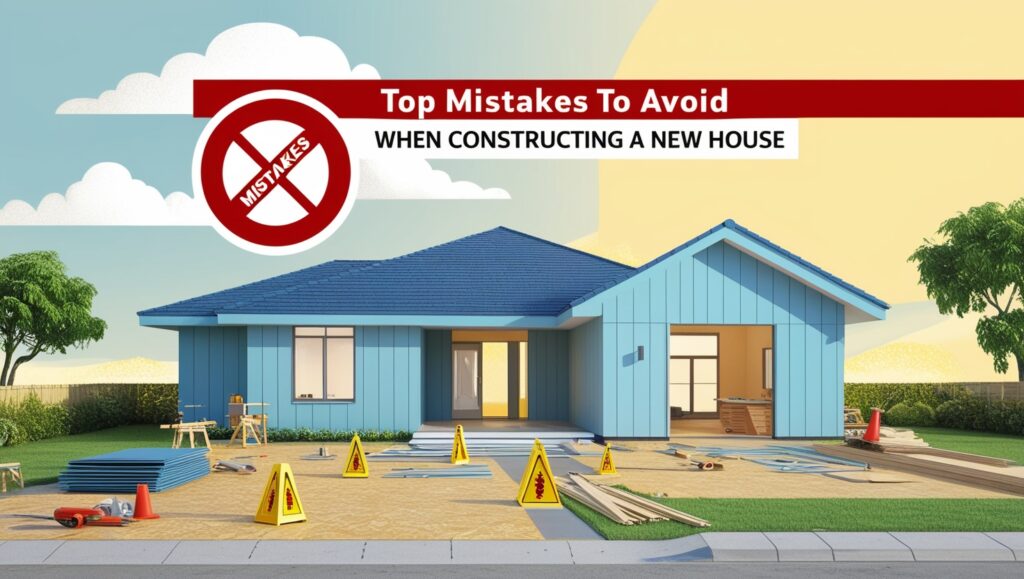Top Mistakes to Avoid When Constructing a New House

Building a new house is an exciting venture, but it’s also a complex process that requires careful planning and execution. Mistakes during construction can lead to costly delays, budget overruns, and long-term issues. Here are some of the most common pitfalls and how to avoid them.
1. Skipping Detailed Planning
Lack of thorough planning is one of the biggest mistakes in home construction. Without a clear vision and detailed blueprints, you risk running into design inconsistencies and functional issues.
How to Avoid:
- Work closely with architects and designers to create comprehensive plans.
- Ensure every detail—from room dimensions to electrical layouts—is well-documented.
- Anticipate future needs, such as additional storage or flexible spaces.
2. Underestimating the Budget
Many homeowners underestimate costs or fail to account for hidden expenses like permits, utility connections, or unexpected construction changes.
How to Avoid:
- Create a realistic budget with a contingency fund of at least 10-15% for unexpected expenses.
- Consult with contractors to get accurate cost estimates.
- Regularly track expenses throughout the project.
3. Choosing the Wrong Location
A beautiful home in the wrong location can lead to long-term dissatisfaction. Factors like accessibility, zoning laws, and soil conditions are often overlooked.
How to Avoid:
- Research the area thoroughly for infrastructure, amenities, and future developments.
- Conduct soil tests to ensure the land is suitable for construction.
- Check local zoning regulations and property restrictions.
4. Compromising on Quality
Using low-quality materials or hiring inexperienced workers may save money upfront but often results in higher maintenance costs and structural issues.
How to Avoid:
- Invest in durable, high-quality materials.
- Vet contractors and hire professionals with a proven track record.
- Ensure materials meet local building codes and standards.

5. Neglecting Energy Efficiency
Ignoring energy-efficient designs and materials can lead to higher utility bills and a less sustainable home.
How to Avoid:
- Incorporate energy-efficient windows, insulation, and appliances.
- Design the home to maximize natural light and ventilation.
- Consider renewable energy options like solar panels.
6. Poor Communication with Contractors
Miscommunication can lead to misunderstandings, delays, and disputes during construction.
How to Avoid:
- Maintain open and regular communication with your contractor.
- Use project management tools to track progress and updates.
- Document all agreements and changes in writing.
7. Skipping Inspections
Overlooking critical inspections during construction can result in code violations and safety hazards.
How to Avoid:
- Schedule inspections at key stages of construction, such as foundation, framing, and final completion.
- Hire an independent inspector if necessary to ensure quality.
- Address issues immediately to prevent further complications.
8. Not Planning for Future Maintenance
A lack of foresight for maintenance needs can lead to avoidable expenses down the line.
How to Avoid:
- Choose low-maintenance materials and finishes.
- Plan for accessible plumbing, electrical, and HVAC systems.
- Keep detailed records of warranties and maintenance schedules.
9. Overlooking Functional Design
Focusing solely on aesthetics without considering practicality can result in a home that looks great but isn’t comfortable to live in.
How to Avoid:
- Prioritize functional layouts that suit your lifestyle.
- Incorporate adequate storage spaces.
- Test designs with 3D renderings or walk-throughs before finalizing.
10. Rushing the Process
Impatience often leads to cutting corners, resulting in subpar work and regrets.
How to Avoid:
- Allow sufficient time for each construction phase, including curing and inspections.
- Avoid pressuring contractors to meet unrealistic deadlines.
- Focus on quality over speed to ensure a long-lasting home.

Final Thoughts
Constructing a new house is a significant investment that demands careful attention to detail. By avoiding these common mistakes and working with experienced professionals, you can streamline the process and achieve a home that meets your expectations and stands the test of time.






